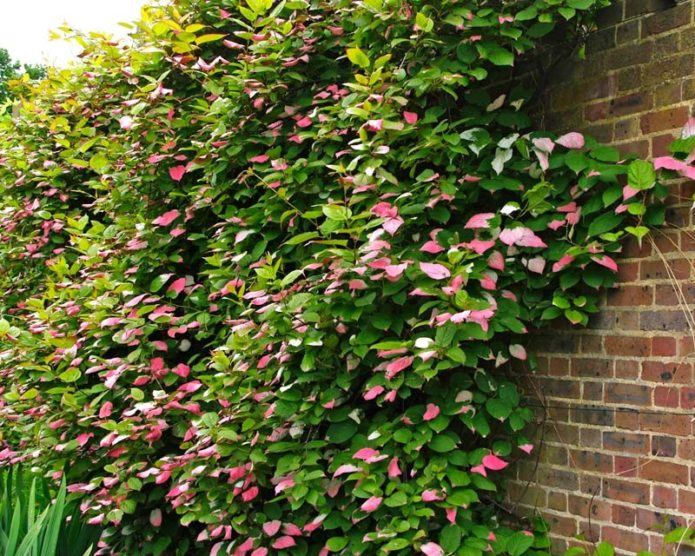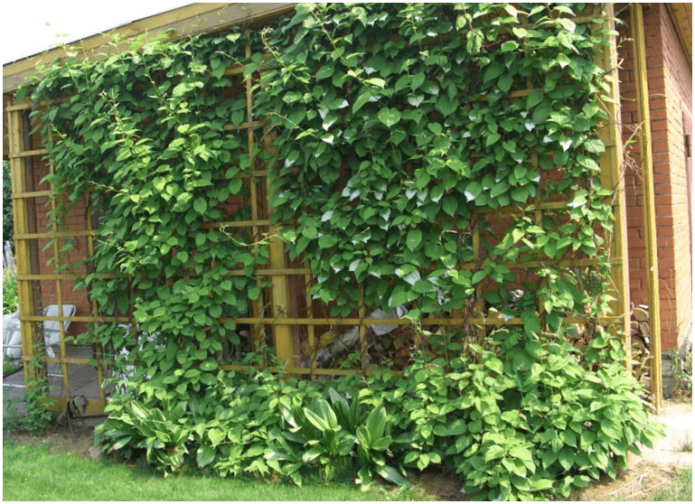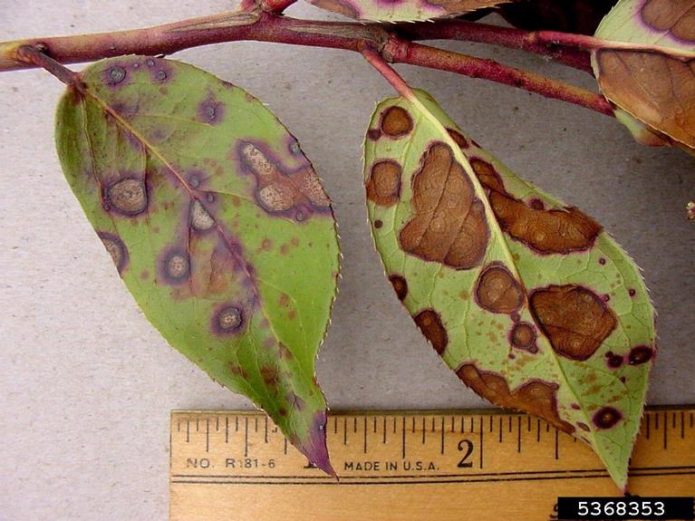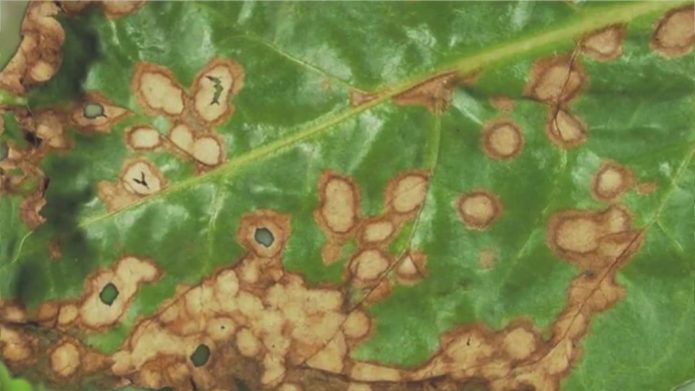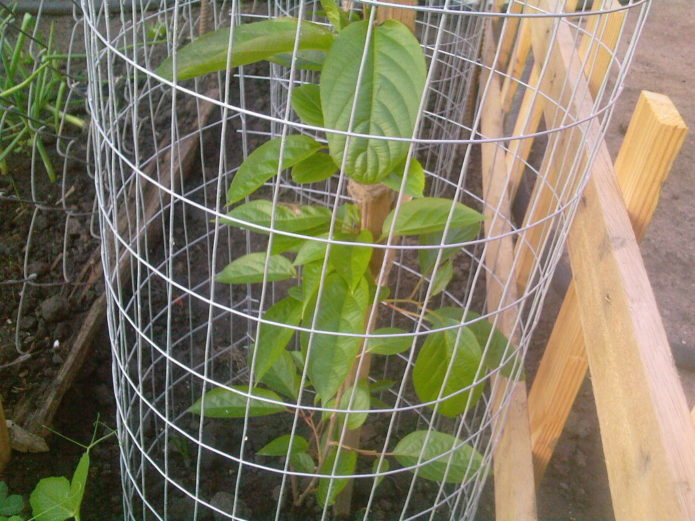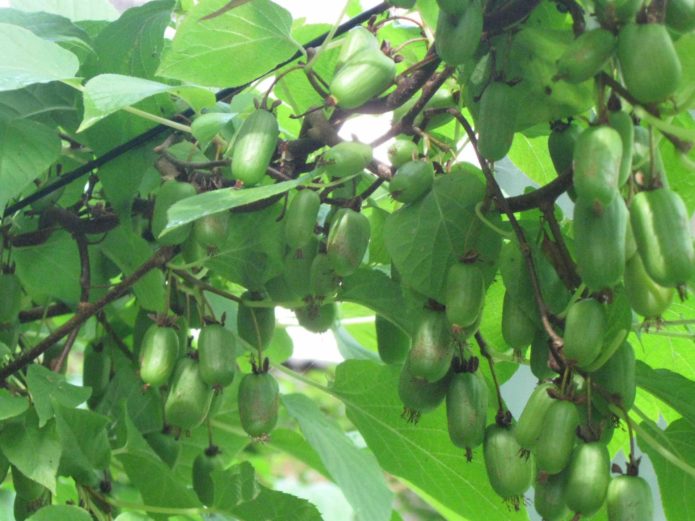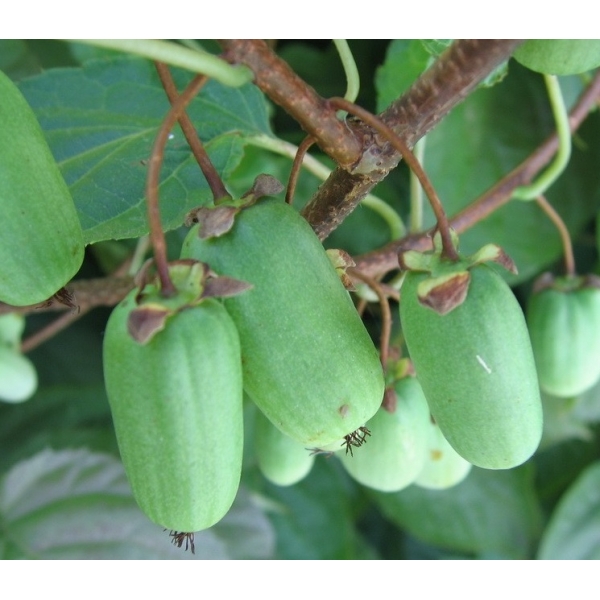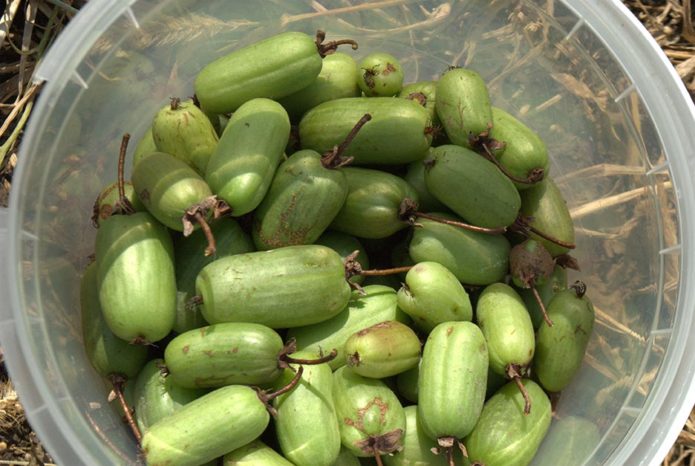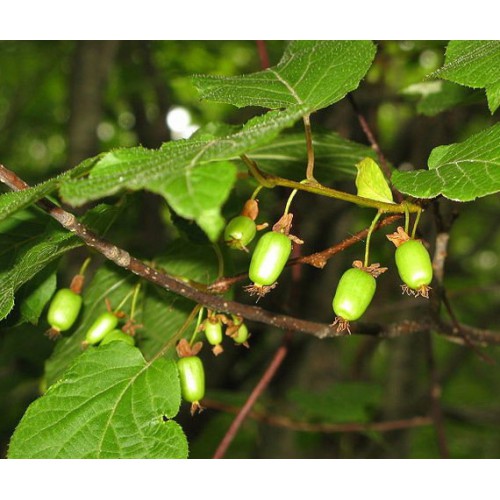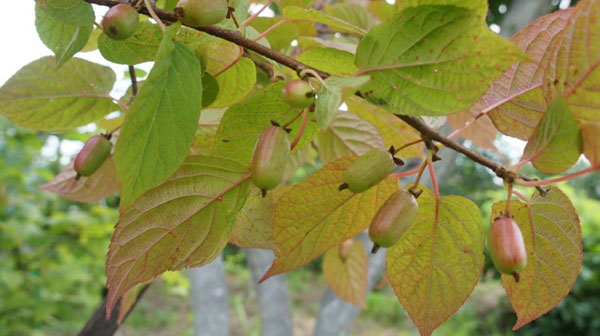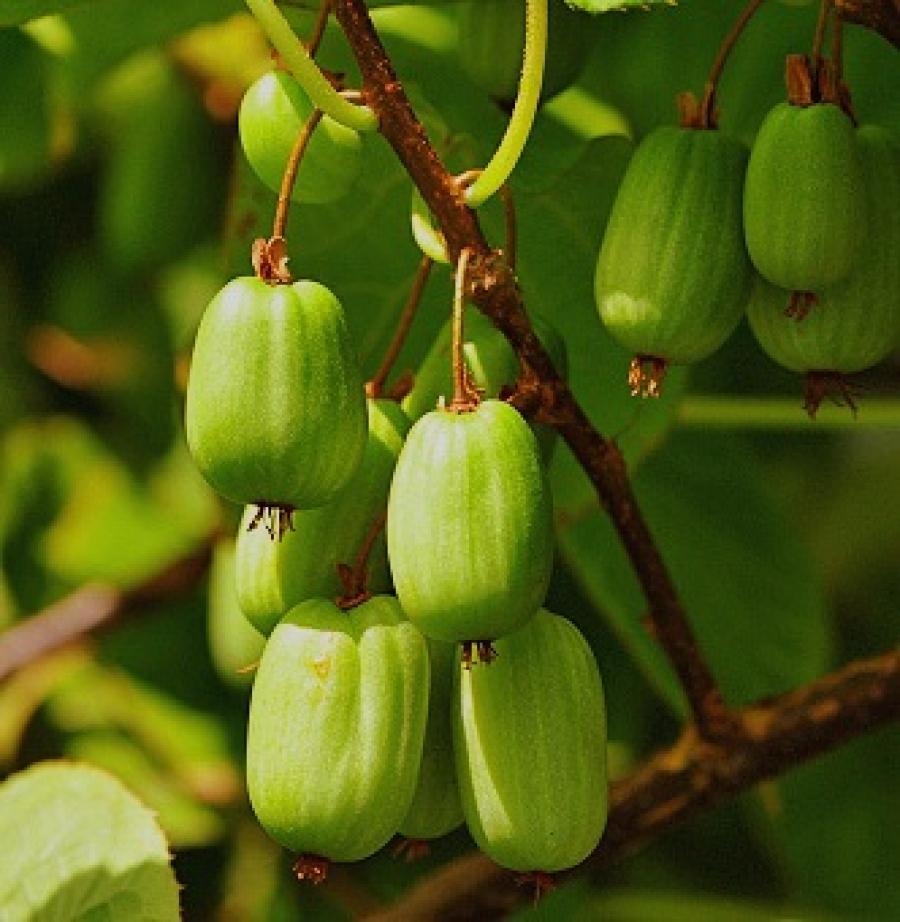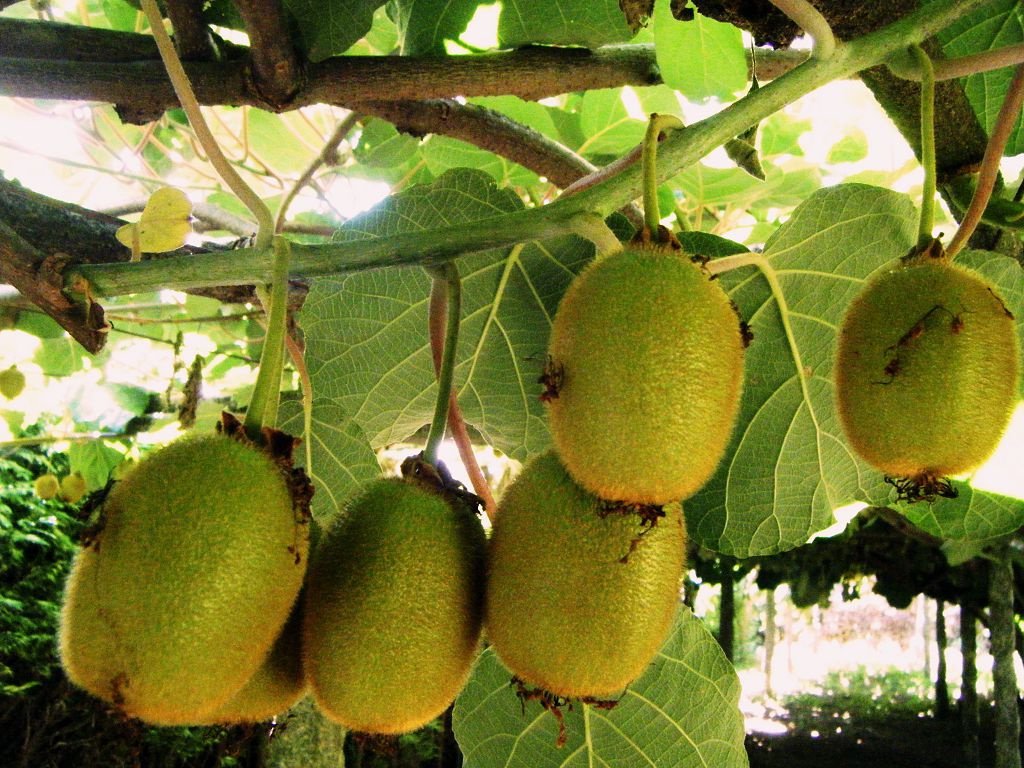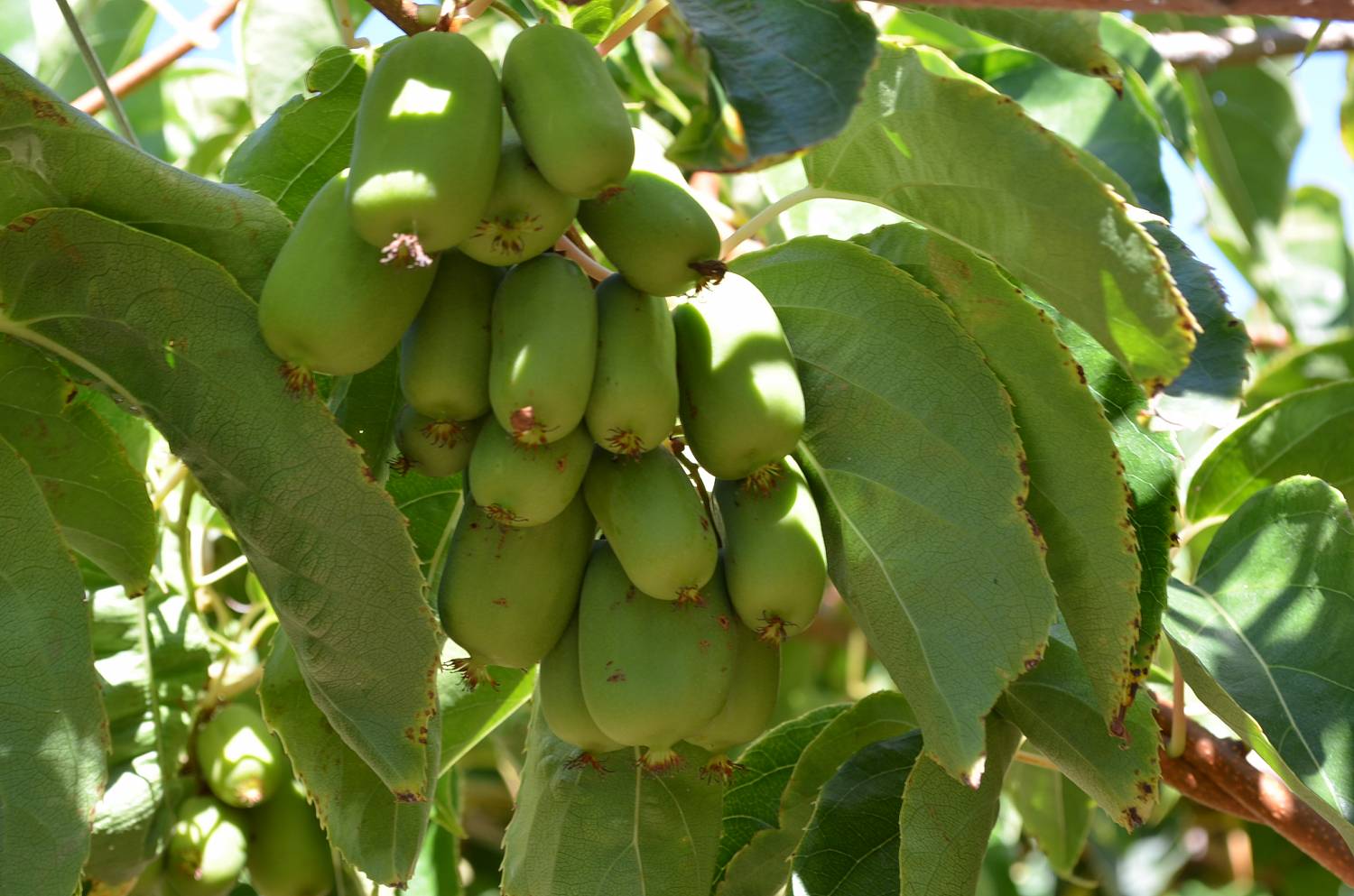Actinidia kolomikta is a winter-hardy tree liana that came to our gardens from the Far East. Its small, elongated, dark green berries taste and aroma similar to strawberries, watermelon, apple or pineapple and contain a record amount of vitamin C. It is not surprising that such a unique plant wins the hearts of more and more gardeners every year. How to grow it on your site and which variety to choose to get a bountiful harvest of tasty and aromatic berries?
Content
Cultivation of actinidia kolomikta
Actinidia kolomikta is appreciated by gardeners not only for tasty fruits, but also for unpretentiousness. It grows well and bears fruit in difficult climatic conditions in most regions of our country and does not require complex care. Nevertheless, in order to obtain a good harvest, it is necessary to follow the rather simple rules of agricultural technology for this crop.
Landing
In order for actinidia kolomikta to please with a bountiful harvest for a long time, it is necessary to choose the right place for planting. An area protected from strong winds, located in partial shade, for example, near the western or eastern wall of a building, is ideal. With a lack of light, the vine stretches and bears fruit only at the ends of the branches, and with an excess of it, the green parts of the plant can get burned.
Actinidia is also quite demanding on the ground. In the wild, it grows in the forest, so it feels best on loose, fertile, slightly acidic soils. Areas with dense soil that have an alkaline reaction or too close groundwater are categorically unsuitable for growing actinidia. Under such conditions, the culture cannot grow a sufficient root system, which often causes the death of the entire plant.
Usually actinidia kolomikta is planted in a permanent place in early spring, after the soil warms up to 5–10 ° C, but in many regions of Russia autumn planting is also acceptable. It is carried out no later than late September or early October, so that the plant has time to take root before the onset of cold weather.
The successful cultivation of actinidia kolomikt is impossible without a competent choice of planting material. It is better to purchase it in specialized stores or nurseries. At markets and fairs, it is easy to buy seedlings that have been weakened by improper storage or do not have the varietal characteristics declared by the seller. Healthy young plants should have well developed, healthy roots and intact shoots.
Actinidia kolomikta is a dioecious plant.For its fruiting, the presence of both male plants, acting as a pollinator, and female, on which berries are tied, are necessary.
For fertilization of 10 female plants, 1-2 males are quite enough. To improve the quality of pollination, they are planted in the extreme parts of the row.
It is guaranteed to determine the sex of the actinidia colomict only after the beginning of flowering. Female flowers have a pistil, which grows into an ovary after pollination, while male flowers have only stamens.
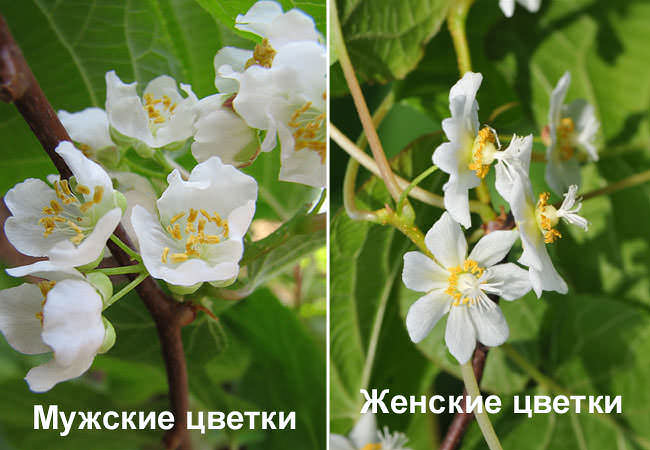
Despite the fact that the female flowers of actinidia kolomikta have both stamens and a pistil, they cannot pollinate themselves due to the sterility of the pollen
Planting pits for actinidia are prepared at least 2-4 weeks before use. When planting in spring, you should take care of their arrangement in the fall, before the soil freezes. For lianas of this species, holes with a diameter of 30–50 cm and a depth of 40–70 cm, located at a distance of 1.5–2 m from each other, are quite enough.
It is advisable to lay a drainage layer at the bottom of the pits, which will prevent stagnation of water. Then they are filled with fertile soil, to which you can add 20–40 g of mineral fertilizers containing nitrogen, phosphorus and potassium in a ratio of 1: 5: 1.
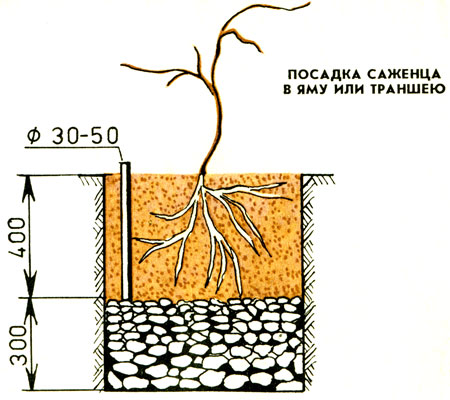
Any small stones can be used as drainage, with the exception of crushed stone containing lime, which promotes alkalization of the soil
After the soil has settled, they proceed directly to planting actinidia kolomikta. During it, the seedling is placed in the center of the prepared hole and covered with fertile soil, carefully tamping it. Then the young plant is well watered and mulched with humus, dry needles or other organic matter.
When planting actinidia kolomikta, the root collar should remain above the ground.
Video: the subtleties of planting actinidia
Care
Like any other fruiting plant, actinidia kolomikta needs care. It includes:
- regular weeding and loosening of the soil;
- fertilization;
- watering;
- measures to protect plants from diseases and pests;
- pruning shoots.
Watering and fertilizing
Successful growth and fruiting of actinidia kolomikta are impossible without sufficient moisture. Its lack can cause premature fall of foliage, and sometimes the death of the plant. Liana does not like waterlogging of the soil, which can cause root rot.
Young plants recently planted in open ground are especially demanding for regular watering. For successful rooting, the soil under them is constantly kept moist, preventing overflow. During a drought, it will be useful to spray the ground part of the vine with clean water. It is held daily, morning and evening. For adult actinidia, several waterings per season are enough.
The first feeding of actinidia kolomikta begin to carry out several years after planting in open ground. As a rule, fertilizers are dissolved in water, but dry application is also allowed. In this case, they are scattered over the previously loosened and well-moistened soil and mulched with humus.
Adult plants of actinidia kolomikta are fed 2-3 times per season:
- In early spring, before the beginning of the growing season, complex fertilizers with a large amount of nitrogen are used, for example, nitroammofosku (the consumption rate is about a tablespoon per one bush).
- During the period of ovary formation, a mixture of 16-19 g of nitrogen and 20-22 g of phosphorus and potassium is added under one actinidia plant.
- In the fall, 3-4 weeks before the onset of cold weather. At this time, fertilizers are used, which do not contain nitrogen. Superphosphate and potassium salt will help the liana successfully survive the winter. They are brought in one tablespoon under each plant.
When growing actinidia kolimikta, do not use unripe manure and lime.
Setting up supports and pruning plants
In the wild, the actinidia kolomikta uses powerful forest trees as a support. But it is not recommended to use horticultural crops in this capacity.A strong liana can deprive a fruit tree of the necessary nutrition, which leads to its significant weakening, and sometimes even death.
Supports made of wood or metal treated with an antiseptic are ideal for growing actinidia kolomikta. For the convenience of harvesting fruits, their height should not be more than 2.5 meters. The lianas are attached to the support with strong ropes or wire.
Actinidia kolomikta tends to thicken the crown. Regular pruning of excess shoots, which is carried out in early autumn, after leaf fall, will help to avoid this. During it, extra shoots, and too long, are shortened. Dry branches are also cut.
Plants over 12 years old need more dramatic, rejuvenating pruning. After its implementation, the height of all shoots should not exceed 30-40 cm. This procedure can significantly increase the yield of mature plants.
You should not prune actinidia kolomikta in the spring. During intensive sap flow, any wound can cause the death of the vine.
Video: how to properly prune actinidia kolomikta
Disease and pest control
Actinidia kolomikta rarely suffers from diseases. But with high humidity and excessive thickening of the crown, it can be affected by such fungal infections as:
- phyllostictosis (brown spot);
- ramulariasis (white spot);
- fruit rot;
- powdery mildew.
When the first symptoms of the disease appear, the damaged leaves and fruits are cut off and burned, and the bush is treated with Bordeaux liquid or other means with a fungicidal effect. If necessary, spraying is repeated after 7-14 days.
Oddly enough, the most dangerous pests of actinidia colomicta are cats. They often nibble on young shoots of this plant, which exude an attractive aroma. But they can be easily protected by fencing them with metal or plastic mesh. Lignified shoots are not popular with cats, so after a few years the fences are removed.
Actinidia does not disregard this culture and insects. Especially dangerous for her:
- leaf beetles;
- caterpillars of the moth;
- lacewing.
These insects, eating leaves and flower buds, can cause severe damage to the plant. To combat them, general-purpose insecticides are used. These include the following drugs:
- Inta-Vir;
- Tanrek;
- Spark Bio;
- Mospilan.
To defeat insect pests, 2-3 treatments are enough. When carrying out them, it is very important to follow the instructions for use of the drug and use protective equipment.
Reproduction
Actinidia kolomikta reproduces by rooted cuttings, cuttings and seeds. But the varietal characteristics of the plant are preserved only with the vegetative method.
Layers
Rooting cuttings is one of the easiest and fastest ways to propagate actinidia colomicta... To obtain them, after the end of sap flow, the central part of a healthy and strong shoot is pinned to the ground and slightly instilled. During the summer, the rooted cut is watered regularly, keeping the soil around it moist. A year later, the young liana is carefully separated from the parental shoot and planted in a permanent place.
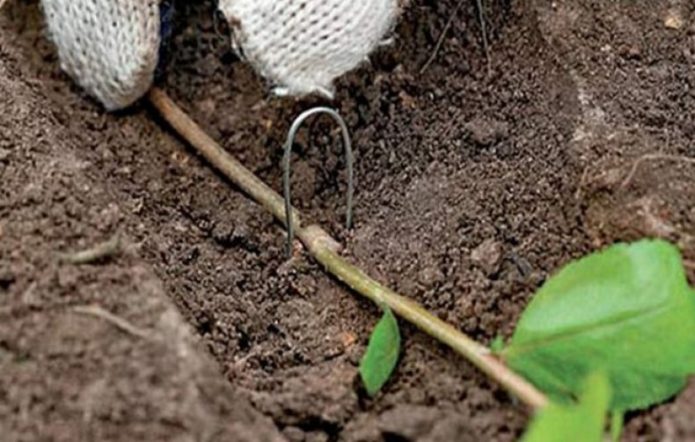
Rooting of the cuttings of actinidia kolomikta is a simple procedure that even a novice gardener can easily handle
Cuttings
Actinidia kolomikta perfectly reproduces by green cuttings, cut from shoots that did not have time to woody... They are harvested in early summer, after the end of sap flow.
For successful rooting of cuttings and obtaining new plants, the following activities must be performed:
- First of all, they choose a place for rooting cuttings. Best suited for this is a site located in partial shade with light, loose soil.
- Young vine shoots, which are thicker than a pencil, are cut into cuttings about 15 cm long and immediately placed in a container with water. This will help prevent them from wilting.
- The lower leaves of the cuttings are removed with a sharp blade, and the upper leaves are shortened by half.
- Prepared cuttings are placed in the ground at an angle of 45 °, leaving no more than 2 buds above the ground, and watered abundantly.
- Arcs are installed over future plants, onto which agrofibre is pulled. Between the shelter and the tops of the cuttings, 10-15 cm of free space must be left.
- During the summer, the soil under the cuttings is kept moist, and for the winter they must be covered with spruce branches or other organic matter.
Young plants can be transplanted to a permanent place as early as next spring. But the weakest of them are better left in the cuttings for another year.
Propagated by actinidia kolomikta and lignified cuttings. They are harvested before the onset of cold weather and stored tied in bundles in boxes with sand at a temperature of about +5 ° C until spring. After warm weather is established, lignified cuttings are planted in a greenhouse or greenhouse and looked after in the same way as for green ones.
Seeds
To grow actinidia from seed, the gardener must have remarkable patience. With a favorable outcome of this process, seedlings will appear only 5 months after sowing, and young plants will bear the first fruits in another 7–8 years.
Seeds of actinidia kolomikta can be bought at the store or obtained from ripe fruits of this culture. In the second case, they must be thoroughly rinsed by placing them in a canvas bag or fine strainer, and dried well.
The procedure for growing actinidia kolomikt from seeds includes several stages:
- In the first half of December, creeper seeds are wrapped in a cloth, which is poured with water so that it completely covers the fabric. To prevent the development of microorganisms, the water must be changed every day.
- After 4 days, the water is drained, and the cloth with seeds is wrung out and placed in wet, disinfected sand for 2 months. During this period, at least once a week, the fabric is taken out and unfolded for several minutes in order for the seeds to be aired. The sand box is stored at room temperature, not allowing it to dry out.
- At the beginning of February, a box with seeds is taken out into the street and covered with snow. If it is impossible to carry out stratification in the open air, it can be placed on the bottom shelf of the refrigerator.
- After another two months, the seeds are transferred to a room with a temperature not higher than +12 ° C. In such conditions, the seedlings of actinidia kolomikt appear in 20-30 days.
- Seedlings of actinidia kolomikt are transplanted into cups with fertile soil and left indoors until 3-4 true leaves appear, after which they are planted in open ground.
For sowing actinidia kolomikta, only fresh seeds are used, since during storage they quickly lose their germination.
The seedlings of actinidia kolomikta grown from seeds are much more hardy than their counterparts, which were born in a vegetative way. The ratio of male to female plants among them is usually 50 to 50.
Video: picking actinidia seedlings
Features of agricultural technology in different regions
In different regions of our country, the nuances of the agrotechnology of actinidia kolomikta may differ. First of all, they are influenced by weather conditions.
In the south of Russia
Gardeners in the south of Russia often face difficulties in growing actinidia kolomikta. In this region, she often suffers from a lack of moisture and sunburn. You can minimize the impact of negative climatic features by planting actinidia kolomikta in the shade and providing it with regular watering. This culture will be grateful for frequent spraying with clean water.
In the Central Region and the Moscow Region
The climatic conditions of the center of Russia and Moscow are well suited for growing actinidia kolomikta. The only thing that can ruin her life is return frosts at the end of spring, which can damage young leaves and shoots, as well as blooming flowers. Experienced gardeners advise covering the vine with agrofibre when the temperature drops. In the afternoon, the shelter from flowering plants must be removed in order not to interfere with pollination.
In Siberia and the Urals
Despite the rather high winter hardiness, in Siberia and the Urals, actinidia kolomikta can be damaged by severe frosts. In order to avoid this, the vine is removed from the trellises and placed on the ground. Young vines are additionally covered with spruce branches, straw or other organic matter.
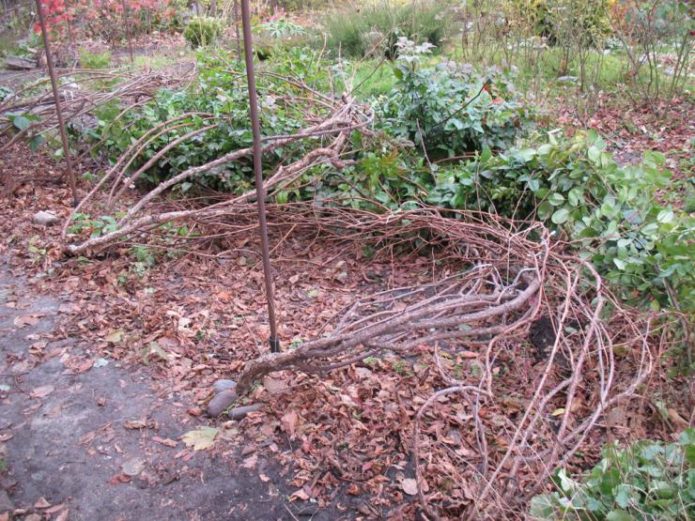
Removing from trellises is a prerequisite for the successful wintering of actinidia kolomikt in Siberia and the Urals
The best varieties of actinidia kolomikta
Despite the fact that actinidia kolomikta has been cultivated relatively recently, breeders have already bred several dozen varieties of this plant. They significantly surpass their wild counterparts not only in yield and size of berries, but also in taste.
For the Moscow region and central Russia
Almost all varieties of actinidia kolomikta are suitable for the Moscow region and central Russia. Especially popular with gardeners in this region are:
- Gourmet. A medium-ripening variety resistant to fungal infections and insect pests, created by the famous Russian breeder Ella Ioganovna Kolbasina. It is characterized by medium-sized shrubs with reddish-brown, hairless shoots and dark olive-green leaves. The cylindrical, rather large berries are olive green in color and have a sour-sweet taste with a pineapple aroma. Their tasting score is 4.5 points.
- Backyard. An early variety bred at the Moscow Experimental Plant Production Station. The bushes are medium-sized. The berries are dark olive, sour-sweet, with a pronounced apple aroma. The skin is thin. Fruit tasting score - 5 points. They are used both for fresh consumption and for various preparations. The yield of the variety is low (about 0.5 kg per bush). In severe winters, it is slightly damaged by frost.
- Sarah. It is a vigorous liana with a pronounced variegation. The berries are quite small, resembling gooseberries in size. Good taste.
- Tanyusha. The elongated cylindrical fruits of this variety reach a weight of 2.5 g. They have a pleasant sweet and sour taste and a pronounced strawberry aroma.
For the Northwest region
In the North-West, winter-hardy varieties of actinidia kolomikta, Leningrad selection, grow and bear fruit best. Among them:
- Leningrad large-fruited. The variety is of medium ripening. The berries are cylindrical, yellowish-green in color. Their average weight ranges from 3 to 4.2 g. The taste is sweet and sour, with a pineapple aroma.
- Vir-1. Winter-hardy variety of average ripening. Its cylindrical, sweet and sour, with a weak nutmeg aroma, the fruits weigh about 3 g. The average yield is 0.8-1.2 kg per plant.
- September. It is characterized by dark green, slightly ribbed, with delicate flesh, which has a sweet taste and a strong nutmeg aroma. One plant of this variety bears up to 1.5 kg of fruits, the average weight of which is about 3.3 g. Ripening period is late.
- Pavlovskaya. One of the most highly productive varieties of actinidia kolomikta (average yield - 1.8–2.5 kg per bush). The berries are round-oval, green, with frequent light stripes. The pulp is tender, sweet, with a pronounced nutmeg aroma.
Male-flowered varieties
There are not so many varieties of actinidia kolomikta with a functionally male type of flowers. In our country, the following are most often used as pollinators:
- Commander. The bush is medium-sized. The leaves are green, with a white-crimson spot at the top. Medium-sized flowers with white petals. The variety is resistant to low temperatures and fungal infections, no more than 10% are damaged by pests.
- Adam. Male variety with variegated leaves. After the liana reaches the age of 3-4 years, they bloom green, at the end of May they become white, and even later turn pink. The older the plant and the brighter the illumination, the more intense the variegation manifests itself .. Adam's flowers are small, white, with a light lemon scent.

The lack of fruit on male plants of actinidia kolomikta is more than compensated by the very decorative foliage
Self-fertile
Some varieties of actinidia kolomikta with a functionally female type of flowers may exhibit features of partial self-fertility. But when grown alone, the yield decreases significantly.
In Russia, the most popular among the partially self-fertile varieties of this crop is Doctor Shimanovsky, bred by Polish breeders. It is a liana with variegated leaves and oval, greenish-yellow berries with a pink tan, ripening in August. The taste of the fruit is sweet and sour, with an apple-pineapple aroma.
Reviews of gardeners about actinidia kolomikta
For many years we have grown in our country house kolomikta, so completely unassuming plant: it can be grown on any soil and undemanding to the location. Only cats are afraid of the first years of life.
For 5 years I have been growing several bushes of actinidia kolomikta (dacha in the north of Moscow). They hibernate without shelter and descent from the trellises. They bloom and bear fruit annually (as the bushes mature, they are more and more abundant). Actinidia has been growing in two neighbors in the country for more than 10 years. Also, there were never any problems with wintering.
First of all, I recommend Gourmet, a very productive, large-fruited variety, and even proven. Last year I collected 4 kilos, and this is probably not the limit for a vine formed on a spacious trellis.
Specifically about D. Szymanowski: the state register - nothing, the Internet - "The variety is female, partially self-fertile, frost-resistant, variegated." "Actinidia kolomikta" Doctor Shimanovsky "is a bisexual, self-pollinating variety." "The variety is bisexual, self-pollinating, blooms in May." ...
in practice - last year there were 3 berries on the bush (without pollinator). This year there are 10 berries hanging, some very small and crooked. Output. If you want to have a berry - plant a man.
As for the Pavlovskaya variety, I grow it. In my opinion, the variety is very worthy. If we compare with September, then the fruits of the first are much larger, although they are single, but they ripen earlier, more amicably and the vine gives off the harvest faster, and the growth of the bush is much more restrained. It is difficult for me to assess the yield, since for a long time the bush was suppressed by the September and nearby jasmine, but, according to N.V. Kozak, this indicator for Pavlovskaya at the level of Lakomka. I will gradually abandon September in favor of Pavlovskaya and other varieties. As for the variegation - it did not seem to me that the variety has any outstanding decorative qualities for a female liana.
I have Kolomikty Sentyabrskaya and Dr. Shimanovsky (plus a man Adam between them). All - from a Polish nursery, there were no problems with them, although I have a frosty lowland. Both actinidia, in my opinion, are very similar both in the appearance and taste of the fruit, and in the appearance of the vines, I do not distinguish them.Shimanovsky and Adam show variegation, but September - like not ("like" - because they are densely planted with me, and it is not always possible to distinguish where whose branch is).
Both actinidia are fruitful and delicious. Ripened in the second half of August. But this year there was something strange: September ripened almost a month ahead of schedule - in July! Although the summer was not hot. And I liked it even more - we ate actinidia for a month longer: in July - September, in August - Shimanovsky.
Actinidia kolomikta can be grown in almost any region of Russia. To do this, it is enough to choose the right variety and give the plant a little attention. In response, actinidia kolomikta will surely thank the gardener with a bountiful harvest of very useful berries with an original taste and aroma.
